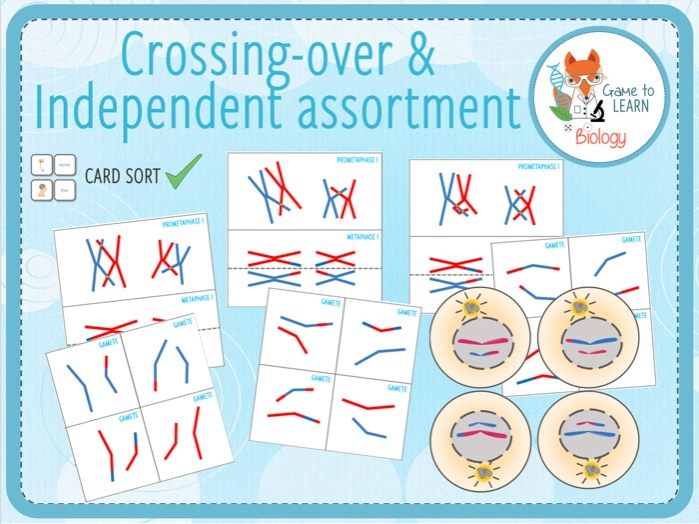Understanding Independent Assortment: The Key to Genetic Variation
Focus Keyword: Independent Assortment
When we talk about the science of genetics, one term that repeatedly pops up is “independent assortment.” Whether you’re a student studying biology, a genetics enthusiast, or someone curious about. This fundamental concept lies at the heart of how genetic diversity occurs naturally, shaping the uniqueness of every living organism.
In this article, we’ll break down what independent assortment is, how it works, its historical origins, why it matters in genetics, and provide real-life examples and applications. So let’s dive in!
What Is Independent Assortment?
Independent assortment refers to the principle that genes for different traits are distributed to gametes independently of one another during meiosis.
While Mendel didn’t know about chromosomes or DNA at the time, his experiments with pea plants helped him observe patterns that we now understand through modern genetics.
The Historical Roots: Mendel’s Law of Independent Assortment
By crossbreeding plants with different traits — such as seed shape and color — he discovered that traits didn’t always appear together. This led to the realization that traits are passed on independently, rather than in fixed groups.
For example, a pea plant with round yellow seeds could produce offspring with round green seeds or wrinkled yellow seeds. The combinations varied, showing no dependency between the seed’s shape and color.
How Independent Assortment Works: A Closer Look at Meiosis
The biological process that explains independent assortment is meiosis, specifically during Metaphase I. Meiosis is the type of cell division that reduces the number of chromosomes by half to form gametes (sperm and egg cells in animals).
Here’s how independent assortment happens:
- The way these chromosomes align determines which combination of maternal and paternal chromosomes will go into each gamete.
- Each pair sorts independently of the other pairs.
Let’s say there are two pairs of chromosomes (one for seed color, one for shape):
- With more chromosomes, the number of combinations increases exponentially.
This random alignment is the basis of independent assortment and leads to the genetic variability we see in sexually reproducing organisms.
Why Is Independent Assortment Important?
Independent assortment plays a critical role in:
- Genetic diversity: It ensures no two offspring (except identical twins) are genetically the same.
- Evolution: More variation means a population can adapt more easily to changing environments.
- Selective breeding: It allows breeders to combine favorable traits without guaranteeing all will always appear together.
- Understanding inheritance patterns: Helps geneticists predict how traits are likely to be inherited using tools like Punnett squares.
Without independent assortment, offspring would inherit entire sets of traits as fixed packages, drastically limiting variation and making populations more genetically uniform — a scenario that’s not ideal for survival.
Examples of Independent Assortment in Real Life
1. Human Eye and Hair Color
A person might inherit blue eyes from one parent and brown hair from another. These traits are governed by different genes and assort independently, meaning they do not affect each other’s inheritance.
2. Dog Breeding
Dog breeders may cross a breed with floppy ears and short legs with one that has straight ears and long legs. The offspring could inherit any combination of these traits, thanks to independent assortment.
3. Mendel’s Pea Plants
Mendel’s famous experiment showed that yellow peas could be round or wrinkled and green peas could also be round or wrinkled — the color and shape were inherited independently.
Independent Assortment vs. Other Genetic Concepts
Understanding independent assortment is easier when compared to other related genetic concepts:
1. Independent Assortment vs. Segregation
- Law of Segregation: Each individual has two alleles for each gene, and these alleles separate during gamete formation.
- Independent Assortment: Describes how different genes separate and do not influence each other’s distribution.
2. Independent Assortment vs. Linkage
- Not all genes assort independently.
- Linked genes violate the law of independent assortment unless crossing over occurs.
Can Independent Assortment Ever Be Broken?
Yes, as mentioned above, linked genes can lead to exceptions. However, even with linkage, crossing over during meiosis can sometimes separate these genes, restoring the randomness of assortment. The further apart two genes are on a chromosome, the more likely crossing over will separate them, making them act independently once again.
Independent Assortment in Modern Genetics
- Predict outcomes in genetic counseling
- Design gene therapy techniques
- Inform research on inherited diseases
- Create better crop varieties in agriculture
As we unravel the human genome and delve deeper into gene editing tools like CRISPR, the principles of independent assortment help us understand how traits are passed and manipulated with precision.
Final Thoughts
From the color of your eyes to the shape of a tomato in your garden, this principle is at play, driving diversity and complexity in the biological world.
Understanding independent assortment not only helps us make sense of heredity but also empowers us to appreciate the randomness and beauty of genetic variation. Whether you’re a student, scientist, or curious learner, recognizing this concept’s role can deepen your appreciation for the science of life.











Post Comment